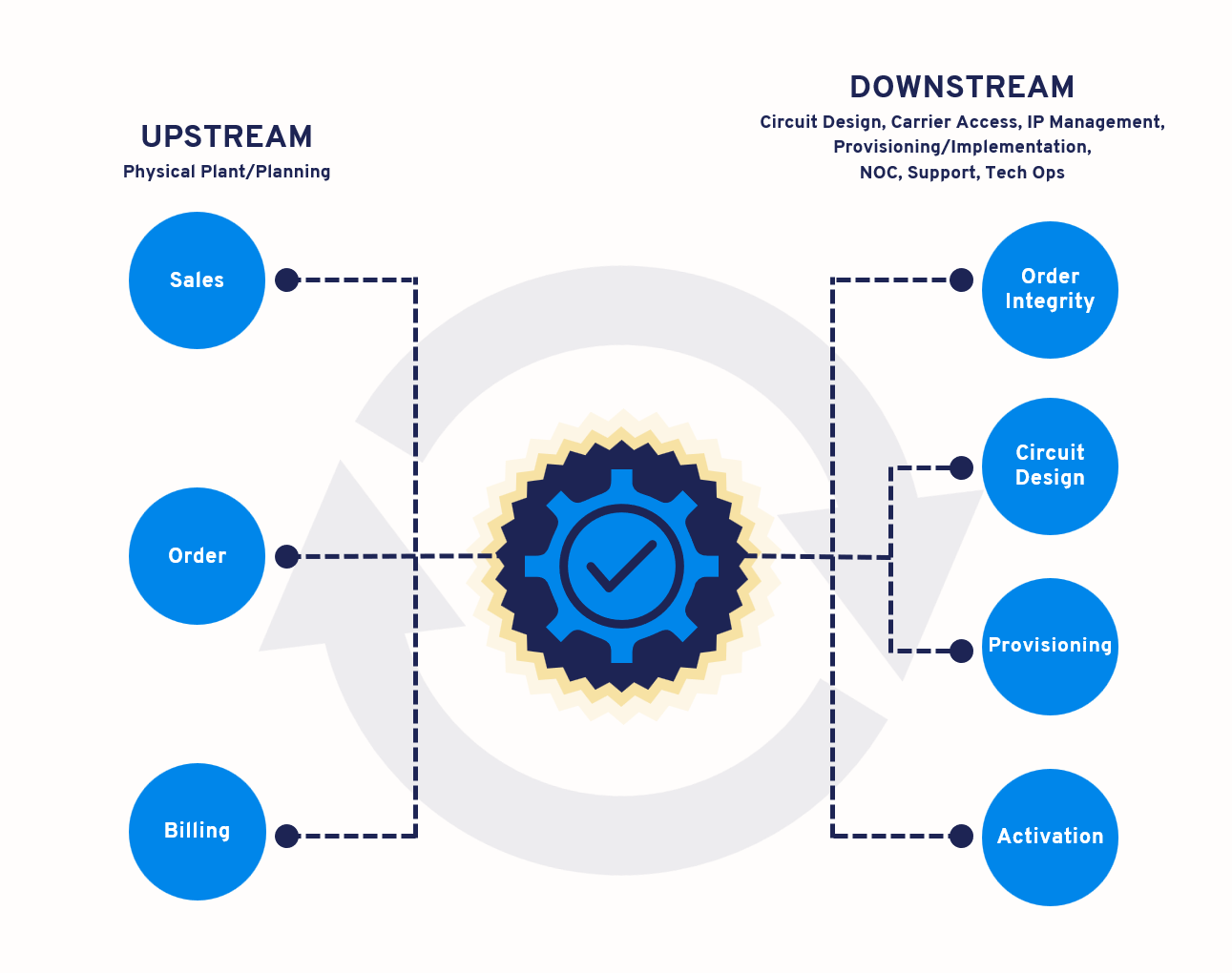Inserting a Quality Control step into an existing service delivery workflow can seem like an extra step that slows down the process. However, if placed correctly and managed properly, it can improve service delivery to end customers.
This additional step is ideal for teams who are experiencing common service delivery interval pain points like:
- Service Delivery Delays
- Failed Installs
- Order-to-cash Delays
- Automation Failures
- Rejects and Errors
- Rework
- Customer Communication Issues
- Billing Issues
- Employee Churn
- Productivity
Where should the Quality Control step be located?
The best location is between the handoff between Sales after Closed/Won and before the Engineering teams receive the order. This is the optimal location to ensure and confirm what the customer ordered before involving downstream Engineering teams (and possibly automation). By doing this, any mistakes can be caught early on, preventing the need for costly and time-consuming rework downstream.

Who should be involved?
The Quality Control team must communicate frequently and work with all upstream and downstream teams necessary to resolve an issue, including:
- Sales (Sales Engineering, Sales Support, Order Operations, etc.)
- Project Management
- Construction
- Carrier Access/Offnet/Type II Provisioning
- NOC
- Engineering
- Tech Ops
It can be difficult to achieve a partnership with all the teams in an organization, but it must be done to ensure a better Customer Experience for the end customers. By cross-training these boundary partners and involving them in the Quality Control process, we can eliminate or minimize previous pain points and ensure a smoother service delivery process.
Benefits
A dedicated Quality Control team brings a multitude of benefits to organizations, both direct and indirect. The obvious benefits include increased productivity, improved service delivery, and accelerated revenue recognition by reducing the pain points previously discussed.
However, the benefits of having a Quality Control team go beyond these obvious. The team functions as a training team, ensuring everyone adheres to organizational standards and stays on the same page. As a result, improved data integrity leads to more meaningful reporting throughout the organization.
Having a central team touching every order ensures that future product rollouts are easier and standards and workflow changes are easier to implement and adhere to. Fewer fire drills to address issues also reduce employee stress, fatigue, and frustration.
Most importantly, having a Quality Control team results in an improved customer experience by delivering services accurately and on time. Overall, the benefits of having a Quality Control team cannot be overstated, and it is essential for organizations to consider investing in one to reap these benefits.
Challenges
It's important to note that implementing a Quality Control step is not without its challenges. It may require additional resources and training, and there may be resistance from employees who are used to the old way of doing things. However, with the right expertise, management, and communication, these challenges can be overcome, and the benefits of adding a Quality Control step can be realized.
Conclusion
Inserting a Quality Control step into an existing service delivery workflow may seem like an extra step, but it can improve service delivery to end customers. By placing it correctly, involving the right boundary partners, and managing it properly, you can ensure a smoother service delivery process, better reporting on issue delays, ease of documentation and standardization, and improved customer satisfaction. While there may be challenges in implementing a Quality Control step, the benefits make it worth considering for any company that wants to improve its service delivery process.
How can Wicresoft help?
With 25 years of industry experience, our vast base of multi-disciplinary experts can get the right Quality Control step into your service delivery interval. We aim to help service providers who experience bottlenecks in the service delivery cycle where Sales and Engineering interface. Wicresoft provides focused operational processes and system support and improvements, ensuring the service is delivered on time, meets the customer's requirements, and is delivered with the expected quality standards.
Book a free consultation today to find out more about our processes.
.jpg)
.jpg)
.jpg)